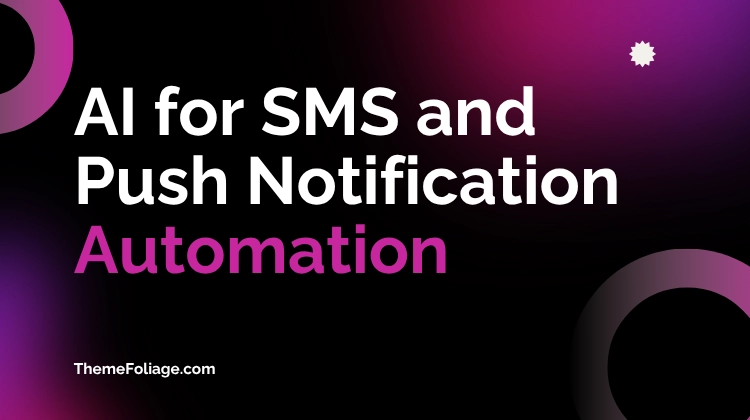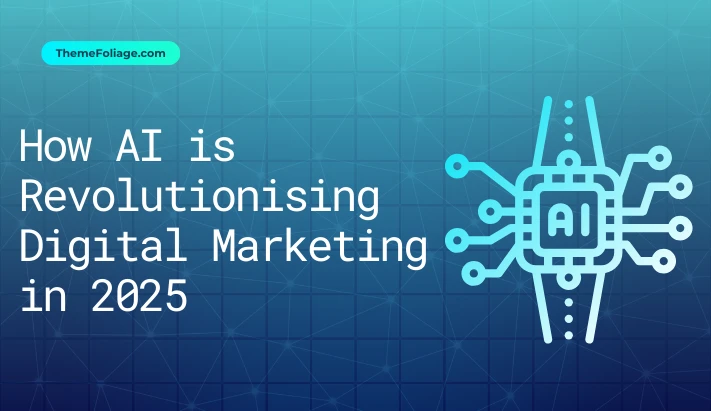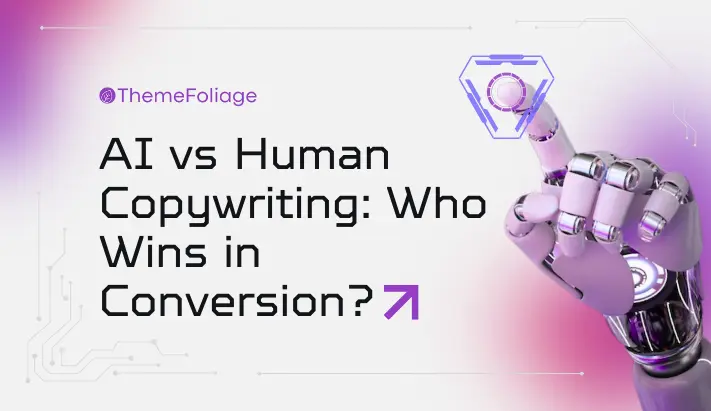Direct messaging SMS and push notifications remains one of the fastest routes from attention to action. In 2025, AI is transforming these channels from blunt broadcast tools into precision instruments that reach the right person at the right time with the right message.
AI-driven timing, personalisation, variant testing and channel orchestration boost open rates, conversions and retention while reducing message fatigue and opt-outs.
This guide explains how AI elevates SMS and push campaigns, practical workflows, recommended tools (note that listed prices may change), implementation steps and governance to protect user trust and compliance.
Why AI Matters for SMS and Push Automation
- Timing Precision: AI learns individual engagement patterns and chooses the optimal send time per user, improving open and click rates.
- Message Relevance: Personalised copy and offers based on behaviour and context raise conversion probability.
- Reduced Fatigue: AI optimises cadence and frequency to avoid over-messaging and lower unsubscribe rates.
- Real-Time Triggers: Event-driven notifications (abandoned cart, price drop, shipment updates) are sent the moment intent is detected.
- Cross-Channel Orchestration: AI coordinates SMS, push, email and in-app messaging to deliver coherent journeys without oversaturation.
- Automated Testing: Multivariate testing and bandit algorithms find top-performing variants faster than manual A/B testing.
Together, these capabilities make SMS and push not just urgent channels but strategic retention and revenue engines.
Core AI Capabilities for SMS and Push
Personalised Timing Prediction
Machine learning models analyse historical opens, device usage, location and time zones to predict when each user is most likely to engage.
Contextual Content Generation
NLP generates message variants tailored to user segments, recent actions and local language or cultural nuance.
Intent Detection and Event Triggers
Real-time event streams detect high-intent signals—cart activity, pricing checks, loyalty threshold reached—and trigger contextual messages.
Cadence and Frequency Optimisation
Reinforcement learning balances message frequency and timing to maximise engagement without increasing opt-outs.
Multivariate Variant Testing
Bandit algorithms and Bayesian optimisation route traffic to the best-performing messages in production, while continuing to explore new variants.
Cross-Channel Decisioning
A decision layer determines whether to send SMS, push, in-app or email for a given micro-moment based on predicted lift and cost per conversion.
Practical Use Cases That Drive Revenue and Retention
- Abandoned Cart Recovery: Detect cart abandonment and send a tailored push or SMS with product image, urgency timer or small discount timed to predicted re-engagement window.
- Price Drop Alerts: Notify users who previously viewed or wishlisted an item when price changes, with AI choosing the channel most likely to convert.
- Time-Sensitive Offers: Send geo-aware flash sale alerts when local context, weather or footfall data indicates higher purchase propensity.
- Reactivation Drip: Identify dormant users and deliver a personalised re-engagement ladder—push, then SMS, then email—based on predicted responsiveness.
- Order and Shipping Updates: Automated transactional messages with real-time ETA and proactive issue handling to reduce support load.
- Onboarding Nudge Series: For apps and SaaS, trigger context-aware tips or tutorial nudges when users demonstrate friction points.
- Loyalty Milestones: Celebrate tier upgrades or reward eligibility with personalised offers delivered on the channel the user prefers.
Recommended Tools and Notes on Pricing
Prices and tiers change frequently. Verify current plans and limits before committing.
| Tool | Primary Capabilities |
|---|---|
| Braze | Omnichannel orchestration, intelligent timing, advanced segmentation |
| MoEngage | Sherpa AI timing, behavioural segmentation, campaign automation |
| OneSignal | Push and SMS delivery, basic AI timing features, developer-friendly APIs |
| PushEngage | Web push automation with AI optimisations |
| Iterable | Cross-channel orchestration with personalisation and triggers |
| Airship | Enterprise push and in-app orchestration with predictive delivery |
| Attentive | SMS-first platform with AI personalisation and compliance features |
| Octane AI | Conversational SMS and behaviour-driven automation for commerce |
Use a CDP or event stream (Segment, RudderStack) to feed signals into these platforms and a lightweight ML layer (Pecan, Feast, custom models) for real-time predictions.
Implementation Roadmap
- Centralise Event Data
Send clicks, page views, cart events, app sessions and purchase data to a CDP or event stream. Ensure identity resolution across devices. - Define High-Impact Micro-Moments
Prioritise events with clear ROI: cart abandon, checkout errors, price alerts, onboarding drop-off and loyalty triggers. - Train Timing and Intent Models
Use historical engagement data to train models for send-time prediction and conversion propensity. Aim for low-latency models that serve predictions in milliseconds. - Create Message Templates and Variants
Build modular templates for SMS and push with fallbacks for character limits, localisation and personalisation tokens. - Set Cadence Rules and Safeguards
Implement frequency caps, cooldown windows and global quiet hours. Include controls for GDPR/CCPA consent and opt-outs. - Deploy Bandit Testing
Launch multivariate tests with a bandit engine to surface winners and auto-scale them while preserving exploration. - Orchestrate Cross-Channel Decisions
Implement a decision layer that selects channel and message variant based on predicted incremental lift and cost. - Monitor Performance and Retrain
Track open, click and conversion rates, plus opt-out and complaint rates. Retrain models weekly or monthly as behaviour drifts. - Scale Gradually
Start with one use case and expand. Use holdout groups to measure incremental lift before full rollout.
Measurement and KPIs
- Open Rate and Click-Through Rate for push and SMS by cohort
- Conversion Rate and Revenue per Message (RPM)
- Opt-Out Rate and Complaint Rate per 1,000 Messages
- Incremental Lift measured via holdout experiments
- Cost Per Conversion and Return on Message Spend
- Model Latency and Prediction Accuracy to ensure timely decisioning
Prefer experiment-based lift measurement over simple attribution to understand real incremental impact.
Governance, Privacy and Compliance
- Consent Management: Ensure explicit opt-in for SMS and push. Respect platform-specific requirements and local regulations.
- Data Minimisation: Use only necessary features for decisioning and purge data per retention policies.
- Opt-Out Simplicity: Provide clear and instantaneous opt-out flows; honour them across channels.
- Opt-In Proof: Maintain verifiable records of consent for legal audits.
- Message Appropriateness: Avoid sensitive topics, health claims, or financial urgencies that can trigger regulatory issues.
- Rate Limits and Carrier Rules: Adhere to carrier throughput limits and local sending restrictions to avoid filtering or penalties.
Common Pitfalls and How to Avoid Them
- Creepy Personalisation: Keep messages helpful and contextually relevant rather than invasive; test with small user panels.
- Ignoring Quiet Hours: Implement timezone-aware quiet windows and local regulations to avoid disturbances.
- Over-Reliance on Short-Term Signals: Blend short-term intent with long-term value to prevent chasing one-off conversions.
- Poor Identity Stitching: Invest in deterministic identifiers where possible to avoid sending duplicate or contradictory messages.
- Underestimating Deliverability: Monitor carrier delivery rates, spam complaints and sender reputation; rotate sender IDs when necessary for large-scale SMS.
- No Fallbacks for Missing Data: Always include a generic, high-quality fallback copy for users with missing tokens or locale info.
Final Thoughts
AI for SMS and push notification automation turns immediacy into a competitive advantage. When you apply predictive timing, contextual content and disciplined cadence rules, these channels become highly efficient conversion and retention levers.
Start with one high-value micro-moment, measure incremental lift with a holdout, and scale while protecting privacy and user experience. The most successful programs in 2025 will be those that combine speed with respect, delivering helpful messages that users actually appreciate.



